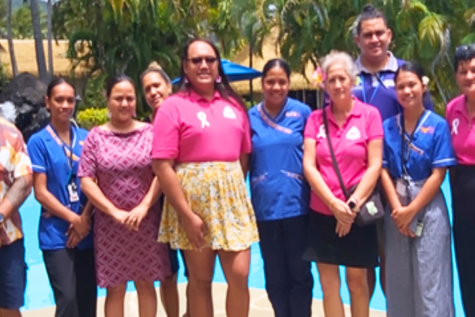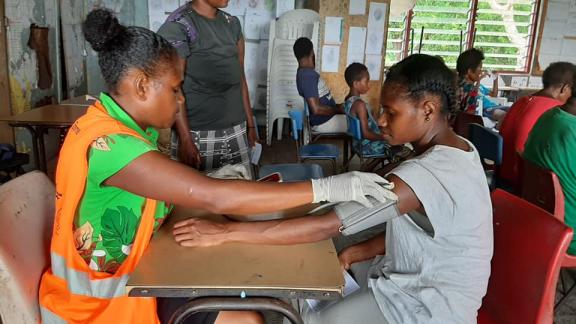Spotlight
A selection of resources from across the Federation

Cook Islands, New Zealand
Ora’anga Meitaki no te Vainetini: Cook Islands Women’s Wellbeing in the Context of Abortion
In 2022, research on abortion, including unsafe abortion, in Cook Islands was conducted by the University of New South Wales, University of the South Pacific Cook Islands Campus Te Puna Vai Mārama | Centre for Research, and Cook Islands Family Welfare Association (CIFWA). Ora’anga Meitaki no te Vainetini: Cook Islands Women’s Wellbeing in the Context of Abortion includes the lived experiences and stories of women, advocates, support persons and health workers in the Cook Islands and Aotearoa New Zealand.
Filter our resources by:

| 15 June 2021
Curriculum for Comprehensive Sexuality Education
Over half of the Asia-Pacific countries surveyed teach sexuality education in some form as a mandatory subject. However, it is often integrated into other subjects. It is recommended that school-based comprehensive sexuality education (CSE) is taught as a mandatory and stand-alone subject. When sexuality education is optional, a significant number of young people are at risk of missing the opportunity to receive education on their sexuality. In nearly half of the countries surveyed, age-appropriate sexuality education is not introduced to young people in early childhood. Children should also receive age appropriate CSE from early primary, and before the onset of puberty and sexual activity, and education should continue throughout adolescence and adulthood. None of the countries in Asia and the Pacific cover all the eight concepts outlined in The International Technical Guidance on Sexuality Education (ITGSE) sufficiently. At both primary and secondary levels, school should cover all eight key concepts in the ITGSE in an age-appropriate manner and in-depth.

| 15 June 2021
Enabling Framework for Comprehensive Sexuality Education
While the majority of countries in the Asia and Pacific region have laws or policies related to sexual and reproductive health and/or sexuality education for young people, commitment to comprehensive sexuality education (CSE) varies significantly across these countries. National laws and regulations mandating the provision of sexuality education in schools are vital for ensuring an environment where accurate CSE can be taught. With laws and policies, the implementation of CSE becomes a matter of institutional policy, rather than the personal choice of individuals.
| 15 June 2021
LEARN. PROTECT. RESPECT. EMPOWER. The Status of Comprehensive Sexuality Education in Asia-pacific: A Summary Review 2020
Comprehensive Sexuality Education (CSE) is a curriculum-based process of teaching and learning about the cognitive, emotional, physical and social aspects of sexuality. It goes beyond simply providing education about reproduction, risks and diseases by also addressing positive sexuality and relationships, and the broader sociocultural and gender influences on sexual and reproductive health, with an emphasis on developing life skills. School-based age-appropriate CSE is an effective means of reaching a large population of children and young people, particularly where rates of school participation are high. This overview of the status of in-school CSE in Asia and the Pacific provides a strong evidence base on the reach and impact of this across the region. This summary review comes with a package of five factsheets. The factsheets shed light on different aspects of school based CSE: enabling framework, curriculum, teacher’s preparedness, monitoring and assessment, and needs of young people. These communication assets can be used as a whole set or individually. Factsheet 1: Enabling framework for sexuality education Factsheet 2: Curriculum Factsheet 3: Teachers’ preparedness Factsheet 4: Monitoring and assessment Factsheet 5: Meeting needs of young people For more information about this review, see the background research report.
| 21 May 2021
Humanitarian Action in the Pacific “Towards Strengthening Local Action in the Pacific"
The report, Humanitarian Action in the Pacific: “Towards Strengthening Local Action in the Pacific”, is a joint initiative under the leadership of the Pacific Resilience Partnership (PRP). The PRP is committed to contributing evidence to uphold accountability to commitments made at the Grand Bargain in Istanbul, May 2016 during the World Humanitarian Summit. This report contributes to realising the Framework of the Resilient Development in the Pacific, an integrated approach to addressing climate change and disaster risk management in the Pacific, specifically on Goal 3 on ‘strengthened disaster preparedness, response and recovery’. This report places local non-government actors at both regional and national levels at the centre of the localisation discourse in the region. In doing so, it recognises the pivotal, and complementary role NGOs play to government and the distinct strength of humanitarian work currently in the Pacific. The report provides recommendations based on a mapping survey conducted across 19 Pacific Island Countries and Territories during 2020. The International Planned Parenthood Federation, alongside partner agencies in the Pacific, provided support which enabled the PRP Localisation Technical Working Group to produce this report.

| 18 March 2021
Understanding Abortion: A Visual Resource
Understanding abortion: a visual resource aims to fill a gap in communication, reducing literacy and language barriers around abortion messaging. It can be used with a range of different audiences, including people with learning disabilities, to support them in the process of making an informed and consensual decision on pregnancy and abortion. This resource offers an insight into what the process of having an abortion is like, showing what a young person’s journey would be if they decided to have an abortion. It is aimed to support community health workers, young people, and others people advocating for an increase in knowledge and information on abortion and reducing the stigma surrounding it. This is a versatile tool, in which the reader can select the most relevant parts of the story according to their needs or those of their audience. We hope this tool can support those who require more information and may need to access safe abortion services. This resource can be used on its own or alongside other IPPF resources around abortion, such as the How to talk about abortion: a guide to rights based messaging or How to educate about abortion: A guide for peer educators, teachers and trainers. In addition, IPPF have produced videos on What is a surgical abortion and What is a medical abortion. For further information on this resource, such as translation into other languages, contact [email protected].
| 18 March 2021
Watch: What is Medical Abortion?
Ever wonder how medical abortion also known as the 'abortion pill', works? In this explainer video, we go through the steps of what to expect during a medical abortion. Please note that this video is an overview of the procedure. For further details on medical abortion, contact your local healthcare provider.
Pagination
- First page
- Previous page
- …
- 5
- 6
- 7
- …
- Next page
- Last page









